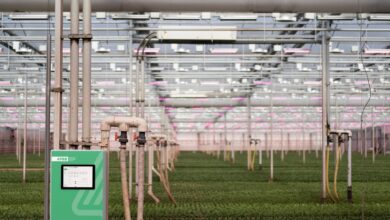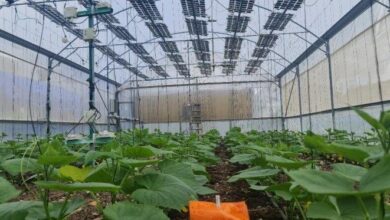Regenerative Agriculture at the Forefront of Climate Solutions
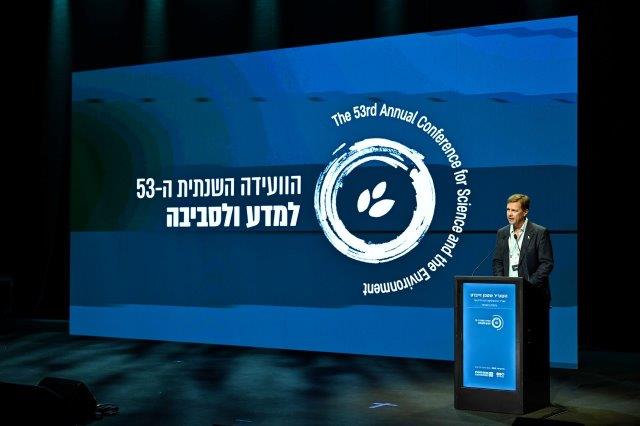
Highlights from the 53rd Environmental Sciences Conference, Tel Aviv University, July 7–8, 2025
Attended the conference and wrote: Elisha Shalgi
As the climate crisis intensifies, the global agricultural community faces a critical challenge: how to ensure the long-term sustainability of food production under increasingly extreme environmental conditions. This was the central theme of the 53rd Environmental Sciences Conference, initiated by the Israel Society of Ecology and Environmental Sciences (ISEES) and held at Tel Aviv University in early July.
The conference brought together researchers, policy-makers, and practitioners to discuss solutions that can safeguard vital agricultural systems. In particular, it emphasized the need for transformative strategies that balance food production with environmental responsibility.
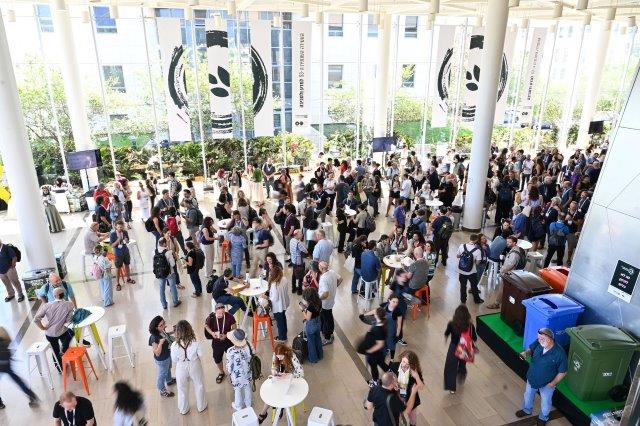
Regenerative Agriculture: A Promising Alternative
One of the most prominent topics was regenerative agriculture—an approach that seeks to restore soil health, increase biodiversity, and reduce environmental harm. A dedicated session explored the definition, principles, and practical implications of this method. While a universal definition remains elusive, participants agreed on its core premise: the need to move away from conventional, industrialized farming models that contribute to soil degradation, water contamination, and biodiversity loss.
Leading voices called for agriculture—particularly in Israel—to be practiced under an environmental stewardship framework. This includes scaling up applied research to evaluate and implement regenerative methods at the farm level.
A noteworthy initiative is the Model Farm pilot at the Newe Ya’ar Research Station, where researchers and farmers collaborate to test regenerative techniques under real-world conditions.
Field Case Study: Assaf Tzur of Kibbutz Tzora
Regenerative Orchard Management in Practice
A standout moment of the conference was the lecture by Assaf Tzur, a grower from Kibbutz Tzora, titled “Regenerative Agriculture – In Practice.” Tzur shared his decade-long experience in applying regenerative methods to his deciduous orchards, located in the hilly terrain of the Nahal Sorek region.
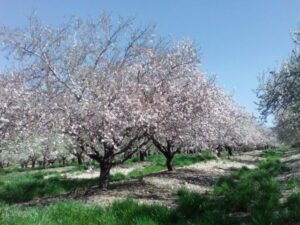 Establishment of a local herbaceous plant in an almond orchard
Establishment of a local herbaceous plant in an almond orchard
In 2010, he began sowing service crops, such as oats, between tree rows in his 18-year-old pecan orchard, established on alluvial soil. Later, he expanded this practice to his pomegranate and almond orchards.
The original motivation was practical: severe soil erosion caused by heavy winter rains had reshaped land contours, uprooted trees, and weakened the orchards’ viability. The use of cover crops significantly mitigated runoff and stabilized the soil.
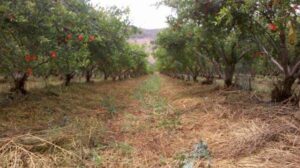 Dry ground cover of service vegetation after mowing
Dry ground cover of service vegetation after mowing
Over time, Tzur embraced a broader environmental vision. Service crops reduced herbicide use year-round and provided a natural vegetative cover that preserved soil moisture and improved irrigation efficiency. One unexpected benefit was a decline in damage to drip irrigation systems—the ground cover made it harder for animals like jackals and birds to tamper with infrastructure.
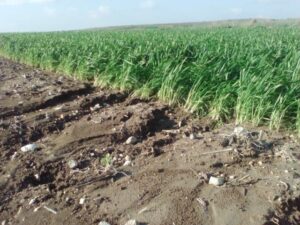 Soil erosion and soil erosion without plant cover
Soil erosion and soil erosion without plant cover
Tzur emphasized that orchards in hilly or erosion-prone areas are particularly vulnerable without ground cover. His approach offers compelling evidence that regenerative practices deliver both environmental and agronomic value.
 Maintaining soil moisture between service crops
Maintaining soil moisture between service crops
Research Highlights: Agriculture and the Environment
A second session presented six key studies at the intersection of agriculture and environmental sustainability:
Dr. Ofir Degani (MIGAL): Introduced an eco-friendly biological control method using Trichoderma fungi and microbial reinforcement to combat maize and cotton diseases—offering an alternative to harmful chemical treatments.
Dr. Oren Shelef (Volcani Center): Investigated how increased plant diversity—through native species, crop mixtures, and conservation practices—enhances soil health and ecological resilience.
Dr. Itay Shulner (Volcani Center): Applied Life Cycle Assessment (LCA) to almond orchards across Israel, finding that the production of 1 kg of almonds emits approximately 5 kg of CO₂, with irrigation, fertilization, and pest control being the major contributors.
Liron Israeli (Tel Aviv University): Proposed the use of tree-based buffers to rehabilitate degraded riparian zones, as seen in the polluted Kishon River basin. Tree plantings improved erosion control, biodiversity, and water management.
Sharon Assis (Hebrew University): Explored the impact of flowering cover crops on attracting pollinators to Hass avocado orchards. By increasing pollinator visits, these companion plants could enhance fruit set and yields.
Looking Ahead
The 53rd Environmental Sciences Conference highlighted an urgent reality: the sustainability of modern agriculture hinges on our ability to embrace change. Whether through research, on-farm experimentation, or shifts in policy and practice, regenerative agriculture offers a powerful, science-based framework for balancing productivity with environmental responsibility.
As the climate crisis deepens, such approaches are no longer optional but essential.


